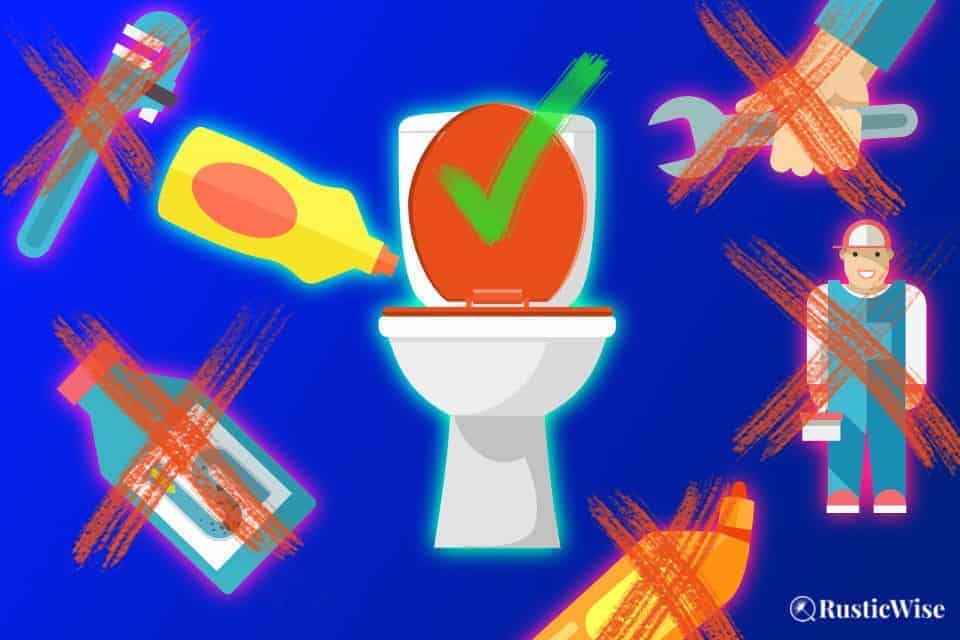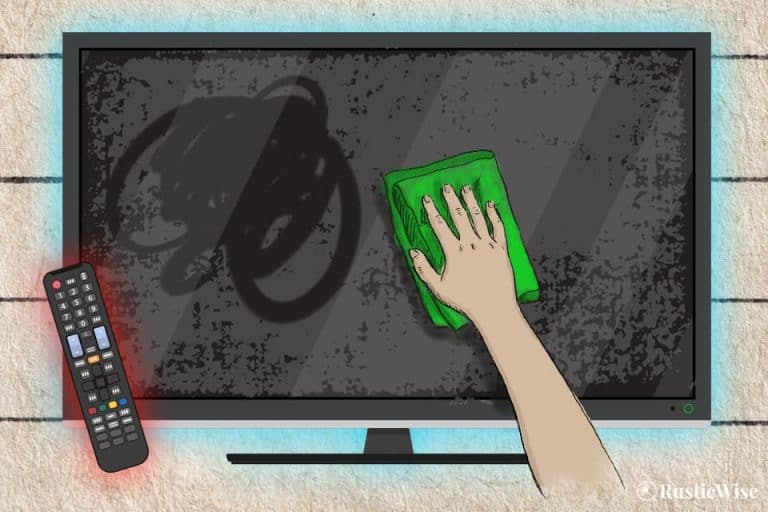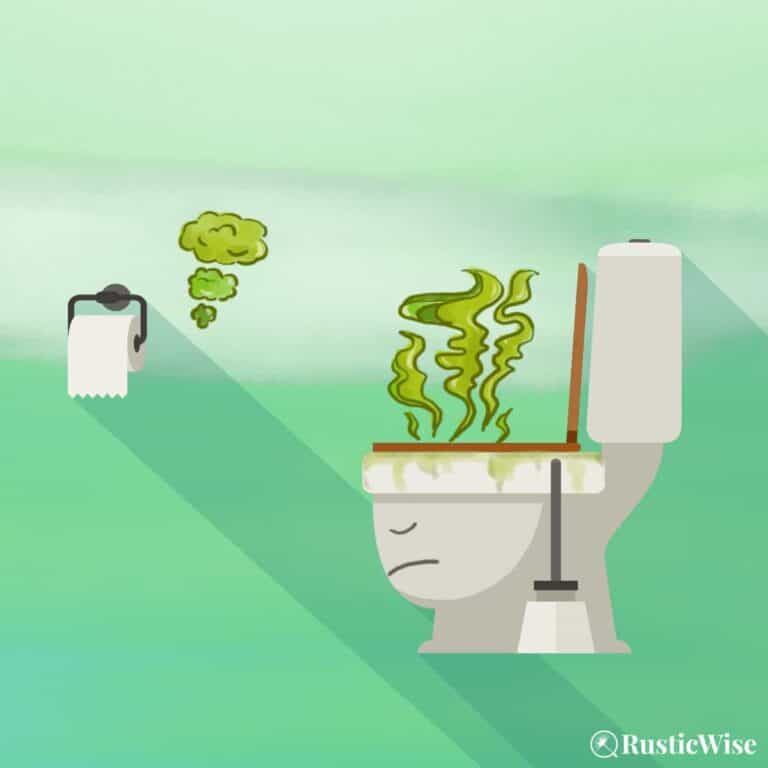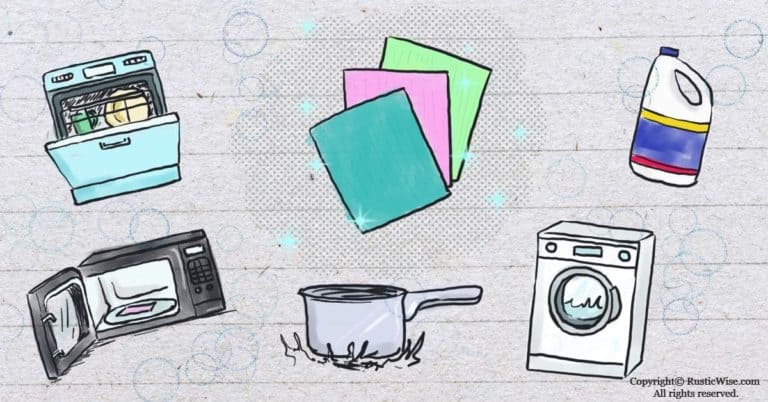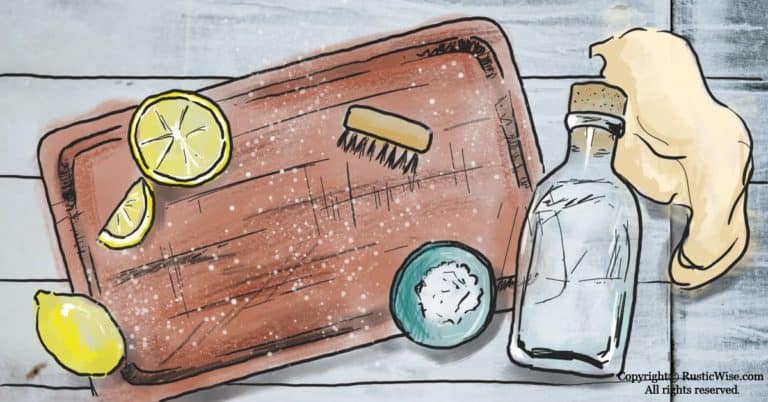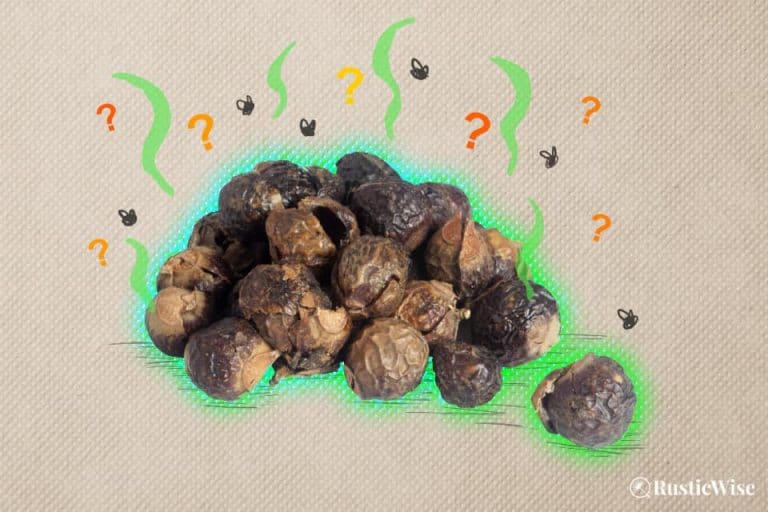How to Unclog a Toilet With Dish Soap Fast in 5 Easy Steps
Do you have a pesky clogged toilet? Don’t panic just yet. Learn how to unclog a toilet with dish soap and hot water. Try these easy steps before calling a plumber. You might have an unclogged toilet in as little as 30 minutes!
This method works best for stubborn clogs within the toilet’s trap. If you know your toddler flushed a toy down the toilet, this method won’t be enough, unfortunately.
Keep reading for five easy steps to unclogging your toilet!
Why dish soap (and hot water) is good for unclogging toilets
When you combine dish soap with the power of hot water, you get a cleaning powerhouse that’s safe and effective.
Just as liquid dish soap is great at lifting grease from dinner dishes and pots and pans, it also works to loosen up debris that’s creating a blockage.
For a quick science lesson, soap molecules have a hydrophobic part (repels water), and a hydrophilic part (loves water). So one part of a soap molecule interacts with water, while the other end gets cozy with oil.
When soap and water combine, the soap molecules form small clusters known as micelles. Each cluster (or micelle) forms with the hydrophobic heads in the center (which plays nice with oil and doesn’t have to mix with water), while the hydrophilic tails face outwards (which mix with water).¹
Essentially, what is happening here is the clogged waste has fatty molecules which are sticking together and clumping up within the toilet trap. The dish soap is an excellent agent to break down these molecules and force the waste to wash away.
When the dish soap reaches the toilet clog, particles get trapped in the middle of each soap micelle. Once you add hot water to the mix, the water-loving tails get whisked away along with the trapped oil/dirt molecules.
Presto—unclogged toilet!

How to unclog a toilet with dish soap: step-by-step
Here’s your guide to removing stubborn clogs with dish soap and hot water.
Supplies you’ll need:
- 1/2 cup liquid dish soap (such as Dawn)
- 1 gallon of water (approximately 3.8 liters)
- Pot
- Rubber gloves
- Oven mitts (optional)
- Plunger
Step 1: Remove excess water in the bowl
This method works best if there’s minimal water in the bowl. Keep the water level to a few inches less than the normal water line. You want to keep some water in the bowl for this method. If you have a lot of water in the bowl, it’s best to bail it out first using a small bucket or container.
Personally, I use an old absorbent mop to wring out excess water.
Step 2: Add dish soap
Add about 1/2 cup of liquid dish detergent such as Dawn, into the toilet bowl.
Many other tutorials online say to let the soap soak for only 10 minutes or so. We suggest you allow the liquid dish soap to soak for at least 30 minutes to allow it to flow down the drain and reach the clog.
You can allow the soap to soak longer if time permits.
The dish soap acts as a lubricant to clear away the clogged debris.
Step 3: Force soap into the clog with a plunger
A lot of experts forget to mention this step. If you simply pour dish soap into the toilet, most of the soap’s compounds just fall to the bottom of the bowl.
More often than not, the clog is within the toilet’s trap (where you can’t see it). I like to use a plunger to work the soap into the clogged area.
Any plunger will do, but the best ones are the ones with rubber flanges that extend out of the suction cup.
To work the soap with a plunger:
- Place the plunger over the soap that has settled at the bottom of the bowl.
- Give it a few good plunges to work the soap into the clog.
This probably won’t get rid of the clog (because the soap hasn’t worked its magic yet). You’ll see the small amount of water in the bowl is bubbly now.
Tip: If you don’t have a plunger, at least stir the soap with a stick to make the water soapy.
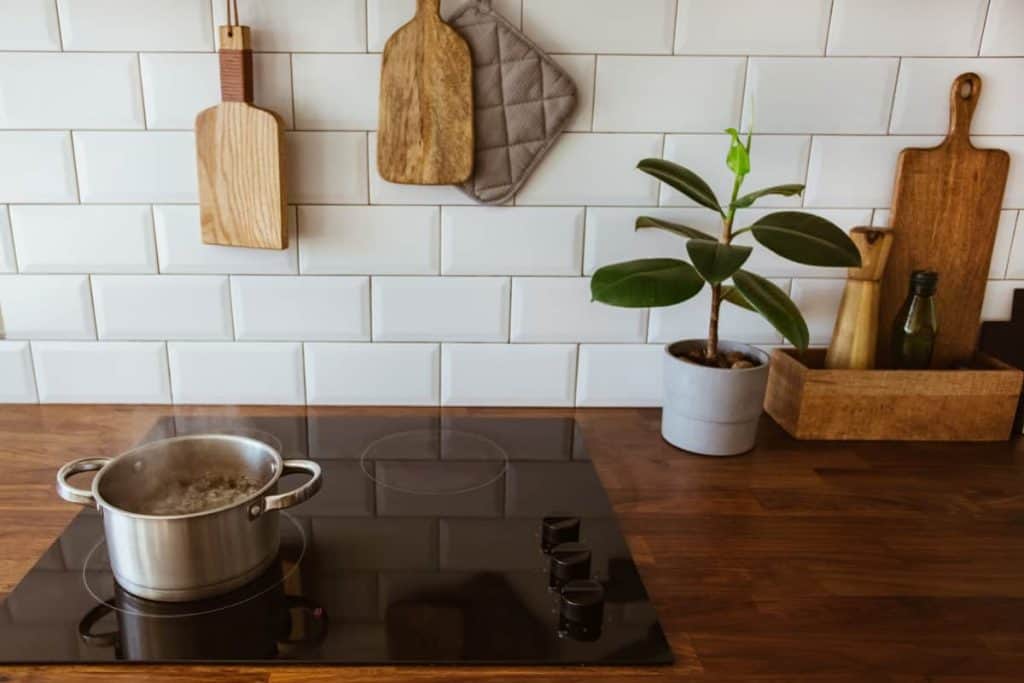
Credit: Yay Images
Step 4: Heat water on stovetop
In the meantime, warm about 1 gallon of water in a pot on the stove. It’s important that you remove the water from the heating element before it reaches a boil.
Do NOT pour boiling hot water into your toilet bowl, as this may cause your bowl to crack. Water should be hot to the touch, but not boiling.
Step 5: Pour hot water into the toilet bowl
Remove the pot from the stovetop and slowly pour the hot water into the toilet bowl. Pour the water away from you to prevent hot water from splashing.
Try to aim the stream of water directly into the bottom of the bowl to apply pressure to the clog.
What to do next
If you’re lucky, the clog may siphon away after pouring the hot water into the bowl—that pesky clog may disappear right away!
If the clog persists, you can repeat the steps above again.
Or you could try using one of the following plumbing tools in the next section.
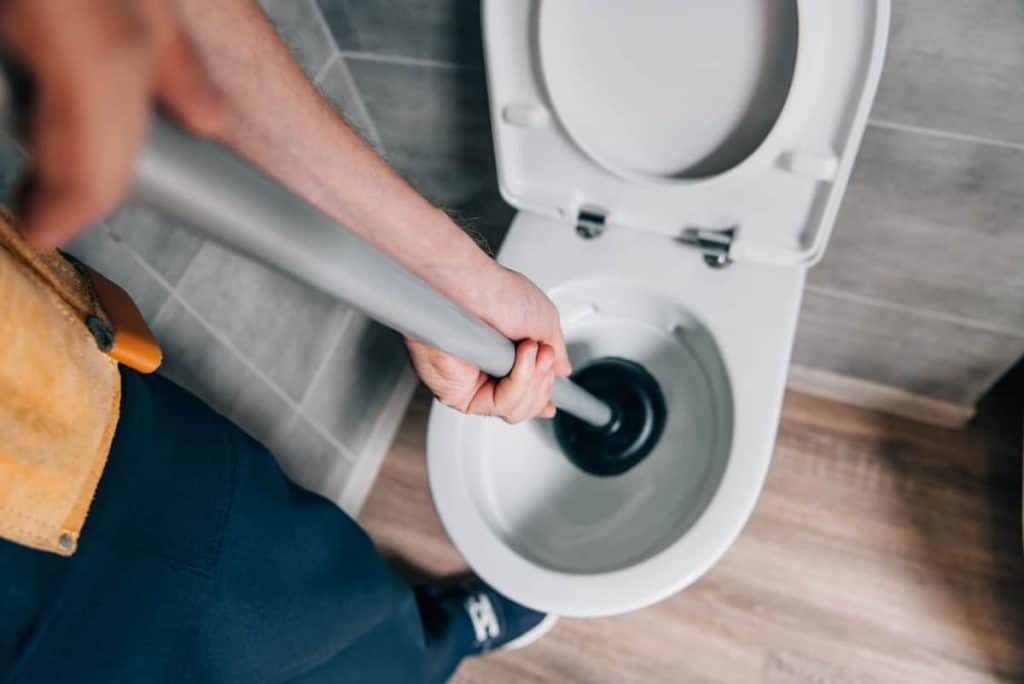
Other things you can try (before calling a plumber)
Is your toilet still backed up after trying the steps above? Follow up with one of the following tools.
Plunger
While regular suction cup plungers will do in a pinch, the plungers with rubber flanges, or ball-shaped heads work better.
Ensure the head of the plunger is submerged in water to create a good seal. Pump the plunger up and down quickly several times. You may need to repeat this cycle more than once.
Toilet auger or plumbing snake
Using a toilet auger or plumbing snake allows you to reach deep into plumbing to remove or break up a clog. The flexible wire coil is designed for easy maneuverability into nooks and crannies.
Take care when inserting the end of the auger or snake into the bowl to prevent scratching. Begin turning the crank in a clockwise motion, making sure you don’t force anything.
If you encounter the clog, carefully remove it.
Tip: Leave several inches of leeway between the auger handle and the cable. If you still don’t have luck removing the clog after using the dish soap and hot water method, or using a plunger or auger/snake, it’s time to call a plumber!
What’s the best dish soap to use for unclogging a toilet?
The best dish soap to use for unclogging toilets is liquid Dawn dish soap. (And, no, we’re not affiliated with Dawn, or getting paid to say this.) There’s a reason most plumbers (and other home experts) swear by Dawn dish soap. It’s because Dawn Ultra Dishwashing Liquid (the OG blue stuff) has a pH of 9.0–9.2.
Compare this with a few other brands, such as Sunlight Liquid Lemon with a pH of 6.³ Or, Palmolive Original with a pH of 7.2.⁴
If you recall, the pH scale goes from 0 to 14. A pH of 7 is neutral; anything below pH 7 is acidic, and anything above pH 7 is alkaline or basic.
Keep in mind that each number change in pH represents a ten-fold increase. For example, a soap with pH 8 is ten times more alkaline than a soap with a pH of 7.
The more alkaline a soap is, the more cleaning power it has. Many liquid drain cleaners, for example, have a pH of 13.
This means that liquid Dawn dish soaps are much more powerful alkaline liquids (and therefore effective cleaners) than other leading brands.
Tips for keeping your toilet clog-free
Now that you know how to unclog a toilet with dish soap and hot water, here are a few easy tips on preventing the problem from happening again.
Is there water leaking from under your toilet? Check out our article on troubleshooting water and how to fix it.

References
- University of Illinois at Urbana-Champaign, Department of Physics, How does soap work to eliminate dirt?, https://van.physics.illinois.edu/qa/listing.php?id=465&t=soap!. Accessed January 2022.
- Dawn MSDS: http://sds.chemtel.net/webclients/cheneybrothers/540011SDS.pdf
- Sunlight MSDS: https://imperialsoap.com/wp-content/uploads/msds/Sunlight%20Dishwashing%20Liquid.pdf
- Palmolive MSDS: http://sds.chemtel.net/webclients/cheneybrothers/540013SDS.pdf

Author: Josh Tesolin
Josh is co-founder of RusticWise. When he’s not tinkering in the garden, or fixing something around the house, you can find him working on a vast array of random side projects.

